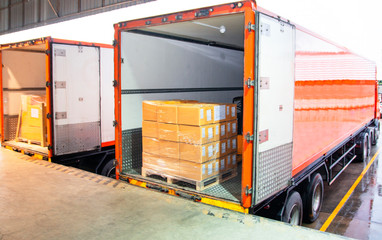
Getting Started With Dock Services
Charleston Dock Builders can help your business save on storage costs and streamline shipping. Using a dock service can also generate additional revenue. In this article, we’ll examine the benefits of cross-docking. This lean supply chain model allows you to reduce storage-related expenses, streamline shipping and generate additional revenue. Getting started with Dock services is easy.
Cross-docking is a lean model of the supply chain that relies on the idea of “just-in-time” inventory replenishment. By eliminating the need for excessive warehousing, the concept allows retailers to deliver goods quickly and at a lower cost. It is also ideal for companies with a high volume of products.
This model of the supply chain allows companies to make continuous improvements in their operations, including the cross-docking process. The key to cross-docking is to empower employees to participate actively in improvement initiatives. This requires employee training that explains the rationale behind processes and enables them to make improvements. It also promotes respect for the worker, which starts with worker safety. In addition, it is important to take employee suggestions seriously.
Companies looking for cost savings should first evaluate their internal processes and determine if they can implement cross-docking. They should also determine if the current supply chain is reliable. If it is, cross-docking should be supported by existing processes. In addition, companies should also consider their ultimate goals. For example, they may be seeking to streamline their supply chain or reduce the time it takes to bring products to market. In other cases, they may want to reduce costs while increasing their customer service.
Cross-docking is an efficient process that can help companies reduce the costs of middle and last-mile shipping. Cross-docking can also improve the company’s overall efficiency by enabling it to serve customers faster. It is simple but requires planning and expertise to execute efficiently.
When implementing cross-docking in a large-scale manufacturing organization, companies can benefit from increased visibility and control of inbound materials. The company was able to gain significant improvements without increasing costs. By implementing this process, average inventory levels and plant space requirements decreased. This improved visibility helped identify problems early on and helped increase employee-centered problem-solving.
Cross-docking is one of the most efficient processes in the supply chain. Unlike traditional warehouse-based distribution models, this process relies on real-time information exchanges. It allows companies to identify inbound shipments that can fill an order. It also provides a high degree of inventory visibility and eliminates the need for break-palleting.
Dock services offer a number of benefits to companies, including a reduction in transportation and storage expenses. By eliminating the need to store goods, cross-docking increases the efficiency of warehouse operations. Not only does cross docking reduce shipping time and costs, but it also minimizes the risk of product damage and inventory loss. It also improves customer service.
By cutting warehousing costs, companies can focus on other areas of business. While warehousing is a necessary part of supply chain operations, it can be unnecessary if your volume of goods is high. Cross-docking, for example, involves unloading the cargo from an incoming container directly into an outbound transportation vehicle, eliminating the need for additional warehousing space. This is particularly beneficial for perishable goods and chemical products.
Cross-docking also reduces the need for employees to drive and transfer goods. By using cross-docking services, goods can be unloaded from a truck, sorted, staged, and shipped within a few hours. Cross-docking services are also cost-effective and integrate well with trucking partners.
Cross-docking eliminates the need for storage, as inventory items are unloaded directly from the shipper to a terminal at a cross-docking facility. The products can then be sent directly to end users or end-users. This eliminates the need to store and handle the inventory and makes the supply chain management process more efficient.
Cross-docking allows companies to receive products from multiple suppliers and ship them directly to their outgoing vehicles. This eliminates the need for warehousing and cuts transportation costs. Moreover, it helps companies receive multiple products from different vendors at once, which saves time and money.
Cross-docking reduces storage costs, which is a critical factor in improving profitability. By reducing storage-related costs, businesses can pass the savings on to their customers. Furthermore, cross-docking reduces labor costs and improves customer satisfaction. It also minimizes the risk of damage during transportation.
